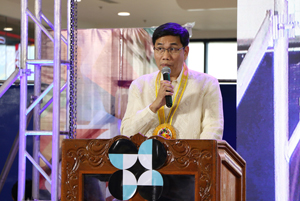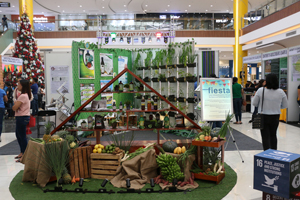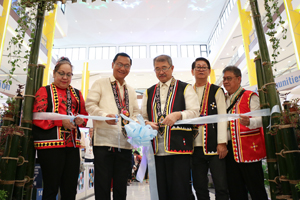
Aligned with the goal of sustaining the country’s biodiversity, an event in Valencia City, Bukidnon was held on November 11-13, 2019 to promote the use of chemical-free and organic tools to improve plant growth production.
Farms and Industry Encounters through the Science and Technology Agenda (FIESTA) on Biofertilizer and Biopesticide featured technologies that are accepted under organic agriculture and can contribute to the sustainability of the country’s biodiversity. The technologies, called biofertilizers and biopesticides, uses beneficial bacteria and microorganisms that help promote plant growth and development.
The FIESTA was held at Robinson’s Place, Valencia City, Bukidnon. The technologies featured are funded by the Philippine Council for Agriculture, Aquatic and Natural Resources Research and Development of the Department of Science and Technology (DOST-PCAARRD) and its Consortia in Northern Mindanao, Southern Mindanao, Caraga, Central Visayas, and Ilocos regions.
“PCAARRD has invested more than ₱46 million in R&D to develop biofertilizers and biopesticides,” said PCAARRD Executive Director Dr. Reynaldo V. Ebora, in a message read by Dr. Melvin B. Carlos, PCAARRD Deputy Executive Director for Administration, Resource Management, and Support Services during the opening program.

Among these investments, Ebora said, include the development of MykoPlus, a microbial inoculant that contains beneficial bacteria that enhance crop growth and yield; mass production of biological control agents for organically grown Arabica coffee in Benguet; development of Nutrio biofertilizer for sugarcane and vegetables; and a natural fungicide from the indigenous plant Tasmannia piperita against disease infections in lettuce and in tomato.
“With these gains, we hope to empower our fellow farmers with information on the technologies, as well as offer to interested parties, technologies that are ready for commercialization,” furthered Ebora.
Research initiatives on organic agriculture started since the declaration of RA 10068 or the Organic Agriculture Act of 2010. The law orders the promotion, propagation, and development of the practice of organic agriculture in the country. Moreover, it says that organic agriculture will “cumulatively condition and enrich the fertility of the soil, increase farm productivity, reduce pollution and destruction of the environment, prevent the depletion of natural resources, further protect the health of farmers, consumers and the general public, and save on imported farm inputs.”
The FIESTA, which is conceptualized by PCAARRD, aims to show the complete sphere of Research and Development as it treats with equal importance the whole agricultural value chain from production to processing to technology mainstreaming. It brings out the best in agri-aqua technologies, products, and services, and make these known to the public through this event.

Exhibits, technology pitching, business forum, and a field visit to two farms are the activities lined up during the Biofertilizer and Biopesticide FIESTA.
Since its implementation in 2011, FIESTA gathers various players of agricultural R&D - the technology generators; farmers; and micro, small, and medium enterprises (MSMEs). It will showcase regional technologies, innovations, products, and services in the agriculture, aquatic and natural resources (AANR) sector.
The Biofertilizer and Biopesticide FIESTA was organized by five Consortia of PCAARRD, with the Northern Mindanao Consortium for the Agriculture, Aquatic and Natural Resources Research and Development (NOMCAARRD) as lead. Other consortia involved were Caraga Consortium for the Agriculture, Aquatic and Natural Resources Research and Development Consortium (CCAARRD); Southern Mindanao Agriculture, Aquatic and Natural Resources Research and Development Consortium (SMAARRDEC); Central Visayas Agriculture, Aquatic and Natural Resources Research and Development Consortium (CVAARRDEC); and Ilocos Agriculture, Aquatic and Resources Research and Development Consortium (ILAARRDEC).
